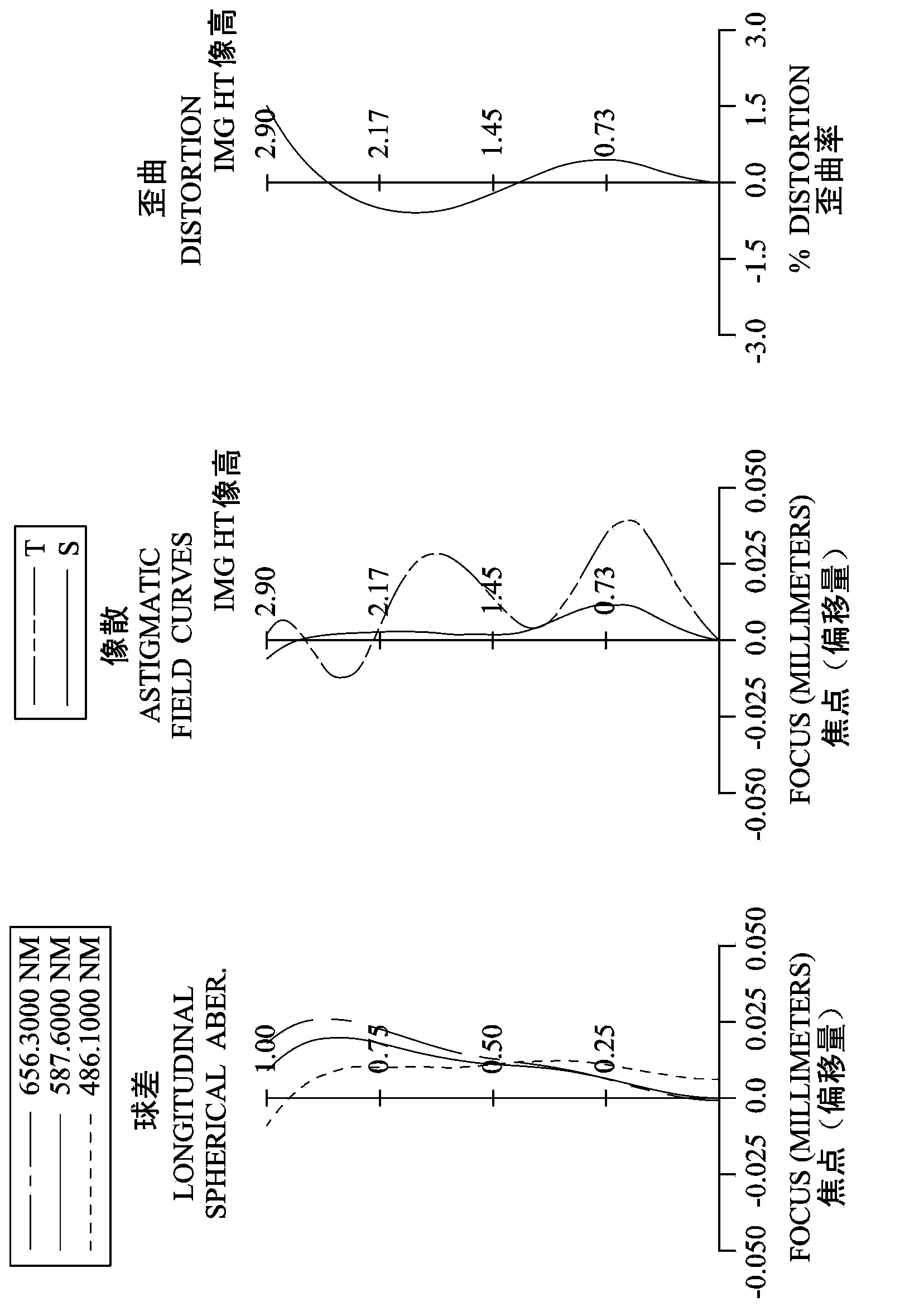Image lens assembly
A lens system and lens technology, applied in optics, instruments, optical components, etc., can solve the problems of difficult to maintain the relative illumination around the image, unable to meet the photographic system, unable to effectively suppress off-axis light and other problems
- Summary
- Abstract
- Description
- Claims
- Application Information
AI Technical Summary
Problems solved by technology
Method used
Image
Examples
no. 1 example
[0090] Please refer to figure 1 and figure 2 ,in figure 1 A schematic diagram showing an image lens system group according to the first embodiment of the present invention, figure 2 From left to right are the spherical aberration, astigmatism and distortion curves of the image lens system group of the first embodiment. Depend on figure 1 It can be seen that the image lens system group of the first embodiment includes the first lens 110, the aperture 100, the second lens 120, the third lens 130, the fourth lens 140, the fifth lens 150, and the sixth lens in order from the object side to the image side. A lens 160 , an IR filter (IR Filter) 180 and an imaging surface 170 .
[0091] The first lens 110 has a positive refractive power, the object-side surface 111 and the image-side surface 112 are both convex and aspheric, and the first lens 110 is made of plastic material.
[0092] The second lens 120 has a positive refractive power. The object-side surface 121 and the imag...
no. 2 example
[0121] Please refer to image 3 and Figure 4 ,in image 3 A schematic diagram illustrating an image lens system group according to a second embodiment of the present invention, Figure 4 From left to right are the spherical aberration, astigmatism and distortion curves of the image lens system group of the second embodiment. Depend on image 3 It can be seen that the image lens system group of the second embodiment includes the first lens 210, the aperture 200, the second lens 220, the third lens 230, the fourth lens 240, the fifth lens 250, and the sixth lens in sequence from the object side to the image side. A lens 260 , an infrared filter 280 and an imaging surface 270 .
[0122] The first lens 210 has a positive refractive power. The object-side surface 211 is convex and the image-side surface 212 is concave, both of which are aspherical. The first lens 210 is made of plastic.
[0123] The second lens 220 has a positive refractive power. The object-side surface 221 ...
no. 3 example
[0139] Please refer to Figure 5 and Image 6 ,in Figure 5 A schematic diagram illustrating an image lens system group according to a third embodiment of the present invention, Image 6 From left to right are the spherical aberration, astigmatism and distortion curves of the image lens system group of the third embodiment. Depend on Figure 5 It can be seen that the image lens system group of the third embodiment includes the first lens 310, the aperture 300, the second lens 320, the third lens 330, the fourth lens 340, the fifth lens 350, and the sixth lens in sequence from the object side to the image side. A lens 360 , an infrared filter 380 and an imaging surface 370 .
[0140] The first lens 310 has a positive refractive power, the object-side surface 311 and the image-side surface 312 are both convex and aspherical, and the first lens 310 is made of plastic material.
[0141] The second lens 320 has negative refractive power. The object-side surface 321 is convex a...
PUM
 Login to View More
Login to View More Abstract
Description
Claims
Application Information
 Login to View More
Login to View More - R&D
- Intellectual Property
- Life Sciences
- Materials
- Tech Scout
- Unparalleled Data Quality
- Higher Quality Content
- 60% Fewer Hallucinations
Browse by: Latest US Patents, China's latest patents, Technical Efficacy Thesaurus, Application Domain, Technology Topic, Popular Technical Reports.
© 2025 PatSnap. All rights reserved.Legal|Privacy policy|Modern Slavery Act Transparency Statement|Sitemap|About US| Contact US: help@patsnap.com



